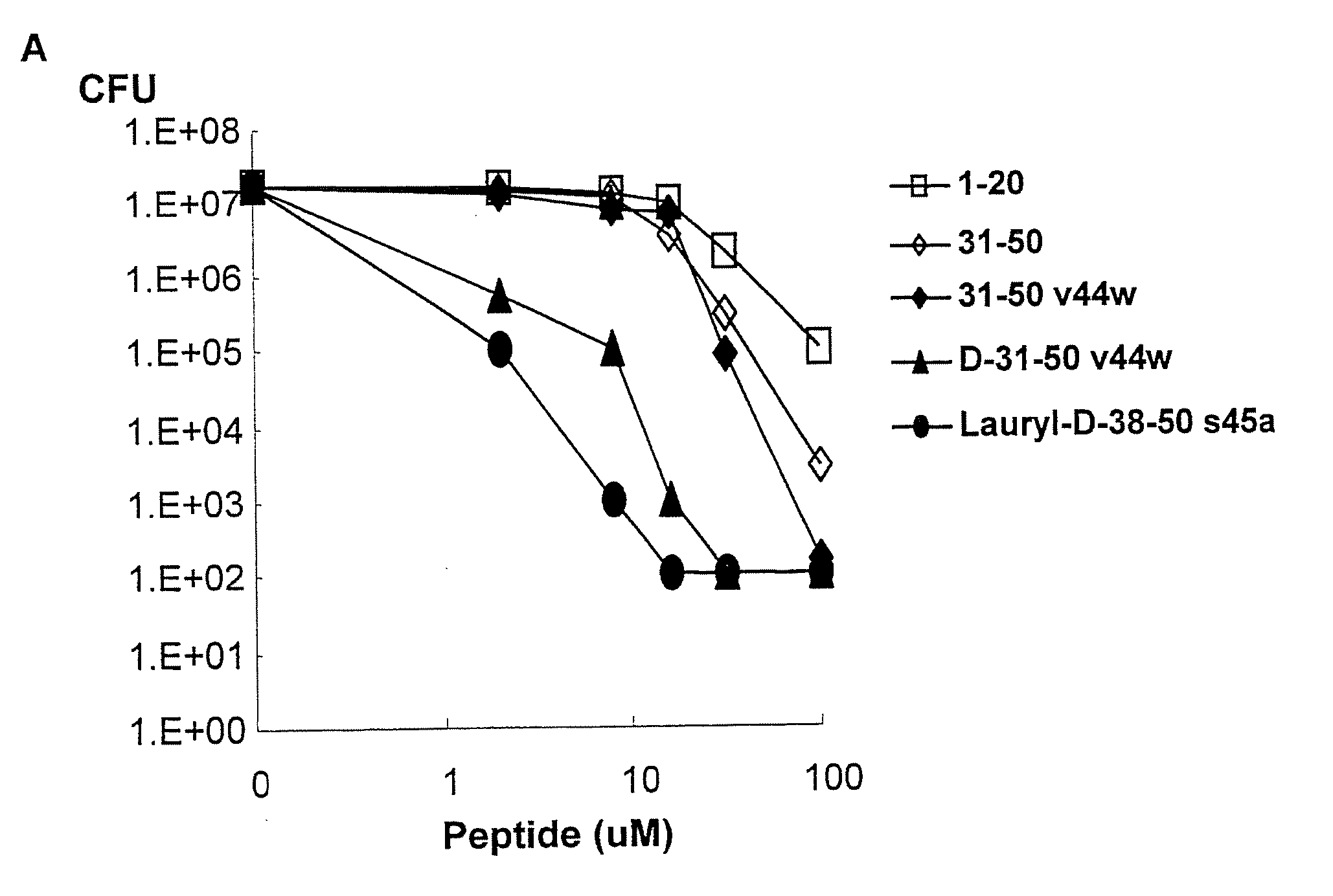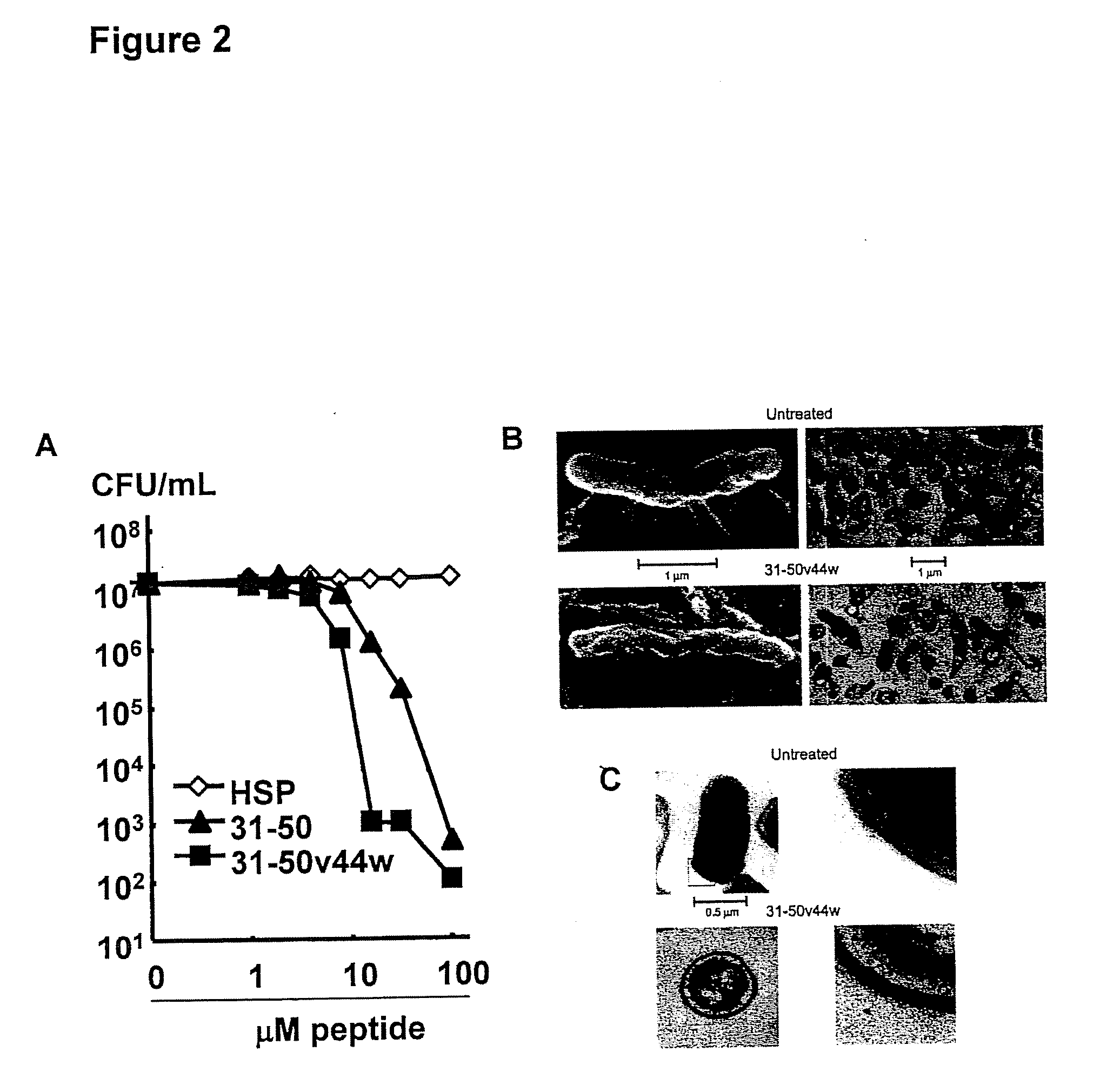Granulysin peptides and methods of use thereof
a technology of granules and peptides, applied in the field of granulesin peptides, can solve the problems of difficult acne treatment, limited effectiveness of traditional antibiotics, and lysine residues that did not inhibit antimicrobial activity, so as to reduce scarring and reduce the appearance of fine lines and wrinkles
- Summary
- Abstract
- Description
- Claims
- Application Information
AI Technical Summary
Benefits of technology
Problems solved by technology
Method used
Image
Examples
example 1
Methods
[0112]Production and purification of recombinant granulysin. Granulysin was produced in Escherichia coli BL21 (DE3) transformed with the kanamycin-selective vector, pET28, containing a hexahistidine fusion tag (Novagen, Madison, Wis.) as previously described (Pena et al., 1997; Ernst et al., 2000). The transformed E. coli were grown in 2×YT broth and induced with 1 mM isopropyl-β-D-thiogalactoside (Fisher Scientific, Pittsburgh, Pa.). The bacteria were harvested and denatured in 6 M guanidine HCl / 0.05 mM Tris HCl pH 7.4. Granulysin was purified via nickel affinity chromatography according to the manufacturer's recommendation (Qiagen, Valencia, Calif.) and eluted with 0.2 M imidazole, then reduced with 10 mM DTT. The denatured granulysin was renatured in 0.75 M arginine, 0.05 M Tris HCl pH 8.0, 0.05 M KCl, 0.1 mM EDTA, and 10 mM oxidized DTT at a 1:5 dilution with constant stirring for 48 hours at 4° C. The re-natured protein was then dialyzed against a buffer containing 2 mM ...
PUM
| Property | Measurement | Unit |
|---|---|---|
| size | aaaaa | aaaaa |
| size | aaaaa | aaaaa |
| size | aaaaa | aaaaa |
Abstract
Description
Claims
Application Information
 Login to View More
Login to View More - R&D Engineer
- R&D Manager
- IP Professional
- Industry Leading Data Capabilities
- Powerful AI technology
- Patent DNA Extraction
Browse by: Latest US Patents, China's latest patents, Technical Efficacy Thesaurus, Application Domain, Technology Topic, Popular Technical Reports.
© 2024 PatSnap. All rights reserved.Legal|Privacy policy|Modern Slavery Act Transparency Statement|Sitemap|About US| Contact US: help@patsnap.com










